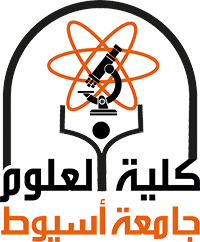The Wadi Sirhan Basin in Jordan originated from the Arabian Platform and served as a stable shelf during the
Paleozoic era. The Lower Paleozoic-Eocene sequence in the Wadi Sirhan Basin contains numerous shales, found,
in ascending order the Upper Ordovician Dubeidib, Lower Silurian Mudawwara, Maastrichtian Ghareb, Paleocene
Taqiyeh, and Eocene Sara fms. These strata warrant investigation of their source-rock potential and hydrocarbon
generation modeling, to precisely elucidate the timing of petroleum generation. To achieve this,
datasets were utilized from various analytical approaches, including Rock-Eval pyrolysis, visual kerogen analysis,
pyrolysis-GC, and lipid biomarker geochemistry. The aim of this study is to assess these source rocks regarding
organic matter quantity and quality, paleoenvironmental implications, thermal maturity, and petroleum generation
depth/time. The Lower Paleozoic Dubeidib and Mudawwara shales are identified as effective source
rocks, containing kerogen types II, II-III, and III. A high proportion of well-preserved, weakly fluorescent
amorphous organic matter suggests an origin from marine plankton-derived alginite in an oxygen-deficient
setting. These formations reached the peak oil window during the Devonian (~405-380 Ma) and Carboniferous
(~320-300 Ma). The Dubeidib Fm experienced late-stage oil generation during the Early Triassic (~255-
250 Ma), with a transformation ratio (TR) of 68%. The Ghareb Fm predominantly contains type II kerogen, while
the Taqiyeh and Sara fms mainly contain type I kerogen with minor type II kerogen. Thermal maturity assessments
using integrated parameters indicate that the Dubeidib and Mudawwara shales have entered the main
phase of hydrocarbon generation, while the Ghareb, Taqiyeh, and Sara shales remain immature. Furthermore,
analysis of biomarker ratios reveals the dominance of marine over terrestrial organic matter in the studied strata.
These clay-rich sediments were deposited under reducing conditions, which further facilitated the rearrangement
of steranes into diasteranes. The modeled TRs indicate the generation and subsequent expulsion of hydrocarbons,
but the absence of suitable reservoirs and/or improper trapping system, owing to the major Hercynian unconformity,
led to an incomplete petroleum system in the basin. Additional investigation is required to evaluate the
potential of the Early Paleozoic shales as subsurface unconventional resources, considering parameters such as
brittleness index and hydraulic fracturing. This study holds important implications for future hydrocarbon
exploration and development in the Wadi Sirhan Basin. The insights gained from such investigations could help
mitigate the risk of petroleum exploration failures in the Wadi Sirhan Basin, guiding future exploration and
development efforts towards promising approaches.
Research Abstract
Research Date
Research Department
Research Journal
Marine and Petroleum Geology
Research Member

